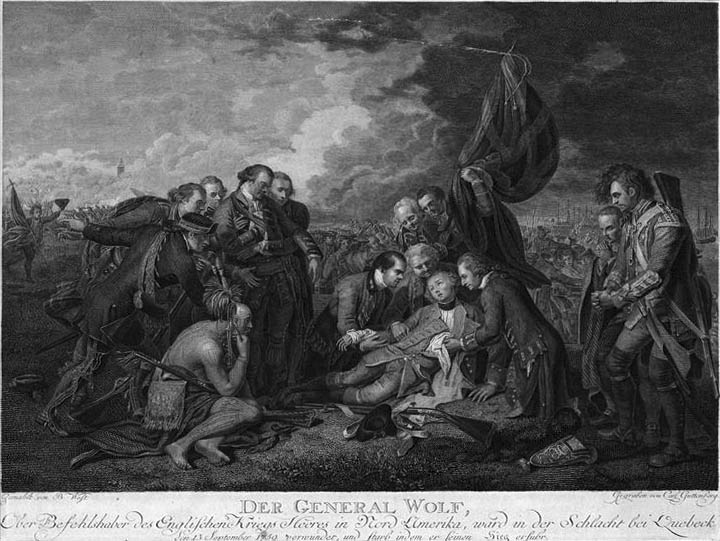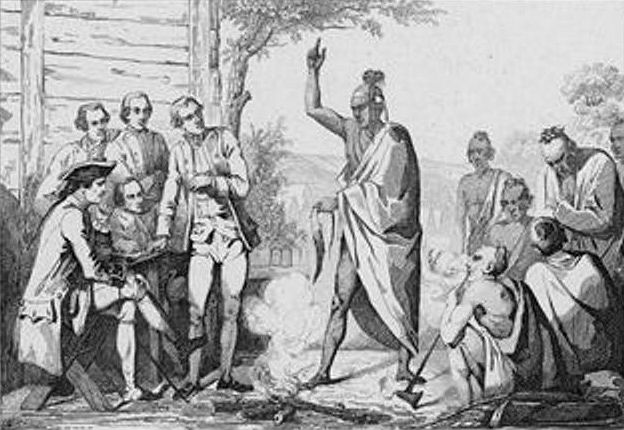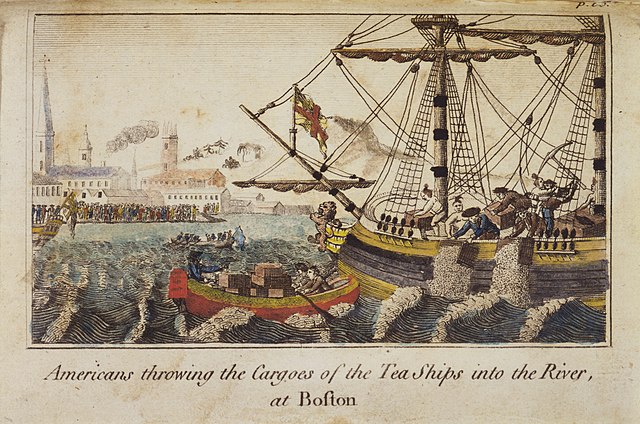The French and Indian War, also known as the Seven Years’ War, was a significant conflict that took place from 1754 to 1763. It was fought between the French and British forces, with the support of their respective Native American allies.
The war was fought primarily in North America, but it also had global implications, as it involved several European powers.
The causes of the French and Indian War were complex and multifaceted. One of the primary causes was the struggle for control of the Ohio River Valley, which was a critical region for both the French and British.
The French had established a string of forts in the region, which threatened British expansion and settlement. Additionally, the conflict was fueled by economic competition, as the French and British both sought to control the lucrative fur trade in the region.
The war had significant effects on both North America and Europe, including the expansion of British territory in North America, the weakening of France’s global power, and the eventual outbreak of the American Revolution.
Background and Context

The French and Indian War, also known as the Seven Years’ War, was fought between 1754 and 1763. It was a conflict between the French and British empires, with their respective Native American allies, over control of North America.
Also Read: Facts About the French and Indian War
In the mid-18th century, North America was home to a number of European colonies, including French, British, and Spanish colonies. The French controlled much of the interior of the continent, while the British had a number of colonies along the eastern coast.
Also Read: Historical Wars of the 1700s
The French and British colonies in North America were very different in their approach to colonization. The French focused on fur trading and maintaining good relations with the Native Americans, while the British focused on agriculture and expanding their territory.
Control of trade was a major issue in the conflict between the French and British. The French controlled much of the fur trade in North America, while the British were interested in expanding their trade and controlling more territory.
Native American relations were also a major factor in the conflict. The French had better relations with the Native Americans, while the British often clashed with them over territory.

King George II was the British monarch during the early years of the war. He was not very involved in the conflict, but his government was responsible for much of the British war effort.
The Seven Years’ War was a global conflict that involved many of the major European powers. It was fought in Europe, Asia, and North America.
William Pitt was a British politician who became the Prime Minister in 1757. He was a strong supporter of the war effort and played a major role in British victory.
Edward Braddock was a British general who was sent to North America to lead the British forces. He was killed in the Battle of the Monongahela in 1755.
George Washington was a young officer in the British army during the early years of the war. He gained valuable experience and later became a key figure in the American Revolution.
Fort Duquesne was a French fort located in what is now Pittsburgh, Pennsylvania. It was a key target for the British during the war.
Fort Necessity was a small fort built by George Washington in 1754. It was attacked by the French and Washington was forced to surrender.
The Battle of the Monongahela was fought in 1755 and was a major defeat for the British. General Braddock was killed and the British forces were forced to retreat.
The Treaty of Paris (1763)
The Treaty of Paris was signed in 1763 and ended the war. The French ceded much of their territory in North America to the British.
The Proclamation of 1763
The Proclamation of 1763 was issued by the British government after the war. It prohibited colonists from settling west of the Appalachian Mountains.
Also Read: Facts about the Proclamation of 1763
The Stamp and Townshend Acts
The Stamp and Townshend Acts were a series of taxes imposed by the British government on the American colonies. They were a major cause of the American Revolution.

The Tea Act
The Tea Act was passed by the British government in 1773 and led to the Boston Tea Party. It was a major event in the lead up to the American Revolution.
Causes of the French and Indian War
French and British Claims to the Ohio River Valley
One of the main causes of the French and Indian War was the dispute between France and Britain over the Ohio River Valley. Both countries claimed the region, which was rich in resources and offered access to the Mississippi River and the Great Lakes.
The French had established a chain of forts in the area to protect their interests, while the British claimed the region as part of their colonies in Virginia and Pennsylvania.
The Struggle for Power in Europe
Another cause of the war was the struggle for power in Europe. France and Britain had been rivals for centuries, and the French saw the British colonies in North America as a threat to their own power.
The war in Europe spilled over into the colonies, as both sides sought to gain an advantage in the global struggle for supremacy.
Native American Alliances
Native American alliances also played a significant role in the war. The French had established good relations with many of the Native American tribes in the region, while the British had not. The Native Americans saw the French as allies and were willing to fight alongside them against the British.
The Role of William Pitt
William Pitt, the British Prime Minister, played an important role in the war. He recognized the importance of the colonies in North America and directed resources towards the conflict. He also appointed capable commanders, such as James Wolfe, who led the successful assault on Quebec.
The Role of George Washington
George Washington, then a young officer in the British army, played a minor role in the early stages of the war. He was sent by Governor Dinwiddie of Virginia to deliver a message to the French, but the mission was unsuccessful. Washington later commanded troops in several battles, including the disastrous defeat at Fort Necessity.
The Role of Edward Braddock
General Edward Braddock was sent by the British to lead an attack on the French and their Native American allies. However, his army was ambushed and defeated near Fort Duquesne, with Braddock himself being killed.
The Role of the Iroquois Confederacy
The Iroquois Confederacy, a powerful Native American alliance, played a significant role in the war. They initially tried to remain neutral, but eventually sided with the British. Their support was crucial in several battles, including the capture of Fort Niagara.
In conclusion, the French and Indian War was caused by a complex set of factors, including territorial disputes, global power struggles, and alliances with Native American tribes. The conflict would have far-reaching consequences for both France and Britain, as well as the Native American populations of the region.
Major Battles and Victories
1. Fort Duquesne
Fort Duquesne was a French fort located at the confluence of the Allegheny and Monongahela rivers, which form the Ohio River. It was a strategic location that controlled access to the Ohio Valley.
In 1755, British General Edward Braddock led an expedition to capture the fort but was ambushed and defeated by French and Native American forces. The fort was eventually captured by the British in 1758 and renamed Fort Pitt, which would later become the city of Pittsburgh.
2. Fort Necessity
Fort Necessity was a hastily constructed fort built by George Washington in 1754. It was located in present-day Pennsylvania and was attacked by French forces, leading to Washington’s surrender. This event marked the beginning of the French and Indian War.
3. The Battle of the Monongahela
The Battle of the Monongahela was fought in 1755 near present-day Pittsburgh. It was a major defeat for the British and led to the death of General Edward Braddock.
4. Louisbourg
Louisbourg was a French fortress located on the east coast of Canada. It was captured by the British in 1758 after a siege that lasted seven weeks. This victory gave the British control of the St. Lawrence River and opened the way for an attack on Quebec.
5. Quebec
Quebec was the capital of New France and a key French stronghold. In 1759, British General James Wolfe led an attack on the city, which resulted in a British victory. The battle was fought on the Plains of Abraham, just outside the city walls. Wolfe was killed during the battle, but his victory led to the fall of New France.
6. Fort Frontenac
Fort Frontenac was a French fort located on Lake Ontario. It was captured by the British in 1758, which gave them control of the Great Lakes.
7. The Battle of Ticonderoga
The Battle of Ticonderoga was fought in 1758 near Lake Champlain. The British, led by General James Abercrombie, attacked the French fort at Ticonderoga but were repulsed with heavy losses.
8. The Battle of the Plains of Abraham
The Battle of the Plains of Abraham was fought in 1759 near Quebec City. The British, under General James Wolfe, defeated the French, led by General Louis-Joseph de Montcalm. Both generals were killed during the battle, and it marked the end of French rule in North America.
9. The Battle of Havana
The Battle of Havana was fought in 1762 during the Seven Years’ War. British forces captured the city of Havana, which was a major victory for them in the Caribbean.
10. The Battle of Saint Pierre and Miquelon
The Battle of Saint Pierre and Miquelon was fought in 1762 during the Seven Years’ War. British forces captured the islands of Saint Pierre and Miquelon, which were French territories off the coast of Newfoundland.
Overall, the major battles and victories of the French and Indian War had a significant impact on the outcome of the conflict. The capture of key French strongholds like Louisbourg and Quebec gave the British control of North America, while the defeat of British forces at Fort Duquesne and the Battle of Monongahela showed the strength of French and Native American forces.
Effects of the French and Indian War
The Treaty of Paris (1763)
The Treaty of Paris, signed in 1763, marked the end of the French and Indian War. The treaty recognized Britain as the dominant power in North America and awarded it control of French Canada and Spanish Florida.
The treaty also ceded French territories east of the Mississippi River to Britain. The treaty’s terms were a significant victory for the British Empire, but it also left Britain with a massive war debt.
The End of French Power in North America
The French and Indian War marked the end of French power in North America. As a result of the war, France lost all of its colonies in North America, except for a few small islands in the Caribbean. The British Empire, on the other hand, emerged from the war as the dominant power in North America.
British Control of Canada and Florida
The British Empire gained control of French Canada and Spanish Florida as a result of the Treaty of Paris. The acquisition of Canada gave Britain control of valuable resources, including furs, fisheries, and timber.
Also Read: Florida History Timeline
Florida, on the other hand, was strategically important as it guarded the Gulf of Mexico, which was a vital trade route for the British Empire.
The Proclamation of 1763
The Proclamation of 1763 was issued by the British government following the French and Indian War. The proclamation prohibited American colonists from settling west of the Appalachian Mountains, which was intended to prevent further conflicts with Native American tribes.
The proclamation was met with resistance from American colonists, who saw it as an infringement of their rights.
The Cost of the War
The French and Indian War was costly for both Britain and the American colonies. Britain incurred a massive war debt, which it attempted to pay off by imposing taxes on the American colonies. This led to resentment among American colonists and was a significant factor in the lead up to the American Revolution.
The Impact on Native Americans
The French and Indian War had a significant impact on Native American tribes. Many tribes had allied with the French during the war and were left vulnerable following the French defeat. The Proclamation of 1763, which prohibited American colonists from settling west of the Appalachian Mountains, was intended to protect Native American lands, but it ultimately failed to do so.
The Seeds of Revolution
The French and Indian War sowed the seeds of revolution in the American colonies. The war was costly for both Britain and the American colonies, and Britain attempted to pay off its war debt by imposing taxes on the colonies. This led to resentment among American colonists, who saw it as an infringement of their rights. The French and Indian War was a significant factor in the lead up to the American Revolution.
Conclusion
In conclusion, the French and Indian War was a pivotal event in the history of North America. The war had a profound impact on the relationship between the British and the colonists, as well as between the colonists and the Native Americans.
The causes of the war were complex and multifaceted, with a combination of economic, political, and territorial factors at play. The British desire to expand their territorial holdings and increase their trade opportunities clashed with the French desire to maintain their own territorial claims and protect their own economic interests.
The effects of the war were far-reaching and long-lasting. The British victory in the war ultimately led to their dominance in North America, but it also created a deep sense of resentment among the colonists, who felt that their contributions to the war effort had not been adequately recognized. The war also had a devastating impact on Native American communities, who were caught in the crossfire and suffered significant losses.
The French and Indian War serves as a reminder of the complex and often fraught relationships that existed between European powers, colonists, and Native Americans in North America during the 18th century. Its legacy continues to be felt today, as historians and scholars continue to explore its causes, effects, and significance.
